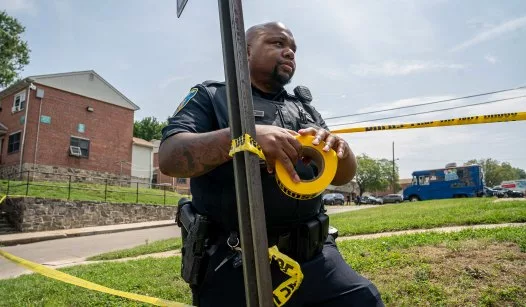In recent years, Baltimore has faced significant challenges related to crime and public safety. The city’s approach to these issues has evolved, moving away from abstract social justice ideals toward more practical, reality-based strategies. This shift reflects a growing recognition that idealism, while noble, may not effectively address the pressing needs of communities grappling with violence and crime.
For many years, discussions surrounding crime in Baltimore often centered on lofty goals of social justice, equity, and reform. While these concepts are undeniably important, the reality on the ground requires immediate and tangible solutions. Residents living in neighborhoods plagued by violence and crime are not just looking for philosophical discussions; they seek actionable strategies that can lead to safer streets and stronger communities.
Baltimore’s decision to prioritize pragmatic approaches over idealistic rhetoric has sparked a renewed focus on community safety. This shift includes increased collaboration between law enforcement agencies and community organizations, emphasizing the importance of building trust and fostering relationships. By engaging with residents, local leaders can better understand the unique challenges faced by their communities and work collaboratively to develop tailored solutions.
One of the key components of this pragmatic approach is the implementation of targeted crime prevention initiatives. These programs focus on addressing the root causes of crime, such as poverty, lack of education, and limited access to resources. By investing in community development, job training, and educational opportunities, Baltimore aims to create a more stable environment that reduces the likelihood of criminal activity.
Moreover, the city has recognized the importance of data-driven strategies in combating crime. By analyzing crime patterns and trends, law enforcement can allocate resources more effectively and develop strategies that address specific issues in high-crime areas. This evidence-based approach allows for a more nuanced understanding of the factors contributing to crime, enabling authorities to respond proactively rather than reactively.
Another vital aspect of Baltimore’s strategy is the emphasis on mental health and support services. Many individuals involved in criminal activity face underlying mental health issues that, if left unaddressed, perpetuate cycles of violence and crime. By providing access to mental health resources and support systems, the city aims to help individuals break free from these cycles and reintegrate into their communities as productive members.
Community engagement is also at the forefront of Baltimore’s efforts. Local residents are encouraged to participate in discussions about safety and crime prevention, fostering a sense of ownership and responsibility for their neighborhoods. By empowering citizens to take an active role in shaping their communities, Baltimore is cultivating a culture of collaboration and resilience.
Critics of this approach may argue that it neglects the broader systemic issues contributing to crime, such as socioeconomic disparities and institutional inequalities. While it is essential to address these larger societal challenges, the immediate focus on pragmatic solutions is a necessary step toward creating safer communities. By demonstrating tangible improvements in public safety, Baltimore can build momentum for more comprehensive reforms in the future.
As the city continues to navigate its crime challenges, it serves as a case study for other urban areas grappling with similar issues. The transition from idealistic rhetoric to practical, community-focused strategies highlights the importance of adaptability in addressing complex social problems. While idealism has its place in shaping long-term goals, the reality of crime necessitates a grounded approach that prioritizes immediate safety and community well-being.
In conclusion, Baltimore’s shift away from purely social justice ideals toward pragmatic solutions reflects a growing understanding of the complexities surrounding crime and public safety. By focusing on community engagement, targeted crime prevention initiatives, and data-driven strategies, the city is taking meaningful steps to address the needs of its residents. This approach not only aims to reduce crime but also strives to build a stronger, more resilient community capable of facing future challenges. As other cities look to Baltimore’s example, the importance of balancing idealism with practical action becomes increasingly clear.
